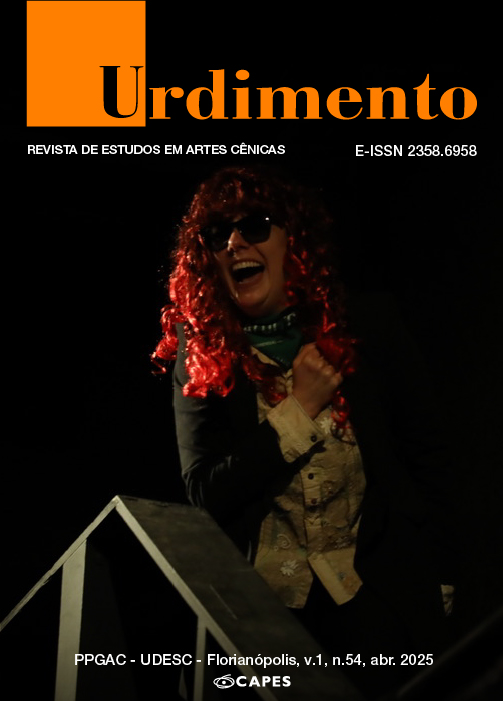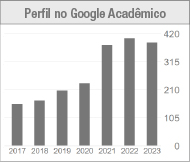A look at the Teatro Experimental de Cali’s Collective Creation Method
DOI:
https://doi.org/10.5965/1414573101542025e0501Keywords:
collective creation, latin American theater, Enrique BuenaventuraAbstract
In this interview with Daniel Felipe Gomez, a member of Teatro Experimental de Cali, we talk about the group's Collective Creation Method, one of the great contributions of TEC and Enrique Buenaventura to Latin American theater. The interview is part of a larger project, an attempt to seek an approximation to the group's methodology, in order to disseminate it here in Brazil and minimize the bibliographic gap we have on the relevant theatrical and pedagogical work developed by the group.
Downloads
References
BUENAVENTURA, Enrique; VIDAL, Jacqueline. Esquema general del método de trabajo colectivo. Acervo do CITEB. Cali. 1975.
BUENAVENTURA, Enrique; VIDAL, Jacqueline. Notas para um método de criação coletiva. Revista Camarim. São Paulo: Cooperativa Paulista de Teatro, 2006.
ENGEL, Leonardo Cesar Ertel. Uma Experiência de Aplicação do Método de Criação Coletiva do TEC (Teatro Experimental de Cali – 1972) na Montagem da Peça ‘O Espectador Condenado à Morte’ de Matéi Visniec. 2022. 1 v. TCC (Graduação em Artes Cênicas) - Universidade Federal de Santa Catarina, Florianópolis, 2022.
Martins, L. PERFORMANCES DA ORALITURA: CORPO, LUGAR DA MEMÓRIA. Letras, (26), 63–81, 2003. https://doi.org/10.5902/2176148511881
VELASCO, María Mercedes. El Nuevo Teatro Colombiano y la colonización cultural. Medellín, 1986.
Published
How to Cite
Issue
Section
License
Copyright (c) 2025 Urdimento: Revista de Estudos em Artes Cênicas

This work is licensed under a Creative Commons Attribution 4.0 International License.
Copyright Statement
The articles published by the magazine are free to use. The copyright is all assigned to the magazine. The articles whose authors are identified represent the expression from the point of view of their authors and not the official position of the journal Urdimento. The author (s) undertakes whenever publishing material relating to the article published in Revista Urdimento mention the said publication as follows: This article was originally published by Urdimento magazine in its volume (put the volume), number (put the number) in the year of (put the year) and can be accessed at:
http://www.revistas.udesc.br/index.php/urdimento
This work is licensed under a Creative Commons Attribution 4.0 International License.




